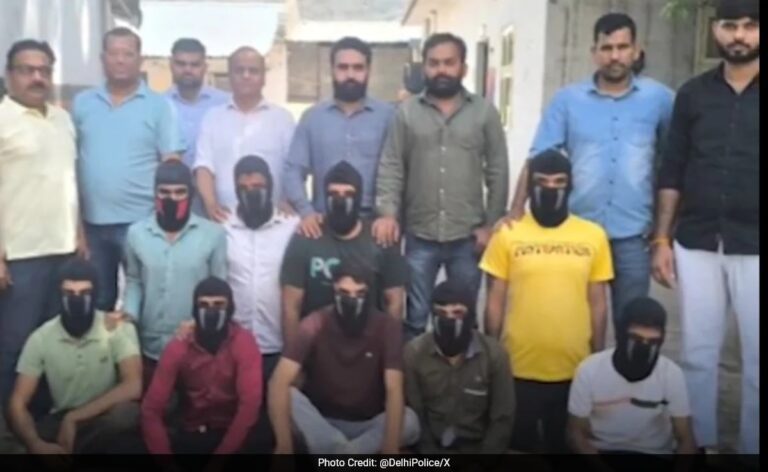
Crews begin removing first piece of twisted steel from collapsed U.S. bridge
By Pooja Sood | Published | No Comments
Teams of engineers on Saturday worked on the complex process of cutting and lifting the first section of twisted steel of Baltimore’s collapsed Francis Scott Key Bridge, which plunged into Patta this week after a massive cargo ship struck one of the bridge’s supports. Pusko River.
In the afternoon, sparks could be seen coming from a section of bent and crumpled steel, and the Coast Guard confirmed that work had begun to dismantle the partially collapsed structure.
Coast Guard Rear Adm. Shannon Gilreath said crews carefully measured and cut the steel on the broken bridge before installing straps so it could be hoisted onto a barge and floated away.
There are seven floating cranes (including one giant crane capable of lifting 1,000 tons), 10 tugboats, nine barges, eight salvage vessels and five Coast Guard vessels in the waters southeast of Baltimore.
Maryland Gov. Wes Moore said each action affects what happens next and ultimately the time it takes to clear all the debris and reopen the waterway and blocked Baltimore Port.
“I can’t stress enough the importance of today and the first movement of this bridge and the wreckage. It’s going to be a very complex process,” Moore said.
Longtime Baltimore resident Randy Lichtenberg and others were undeterred by the morning’s chilly weather, taking photos with their cellphones or just quietly observing pieces of the bridge, including its steel trusses. It weighs 4,000 tons.
“I don’t want to be in that water. It must be cold. It’s a tough job,” Lichtenberg said at a spot on the river called Sparrow Point.
Shock had given way to sadness when he woke up Tuesday morning (March 26) to video of what he said was an iconic part of Baltimore’s skyline falling into the water.
“It never hits you that fast. It’s just unbelievable,” Lichtenberg said.
what happens next
One of the first goals of the water crew is to open smaller auxiliary vessel channels so that tugboats and other small barges can move freely. Crews also hope to stabilize the scene so divers can continue the search for the four missing workers, who are thought to be dead.
Within hours of the bridge collapse, two other workers were rescued from the water and the bodies of two others were pulled from a pickup truck that had fallen and submerged in the river. They have been filling potholes on the bridge, and while police were able to stop traffic after the boat called for help, they were unable to locate the construction workers from Mexico, Guatemala, Honduras and El Salvador.
The crew of the cargo ship Dali, which is managed by Synergy Marine Group, remains on board and surrounded by bridge debris, is safe and being interviewed. They are keeping the ship operational because they will need to remove it from the channel once more debris is cleared.
The vessel is owned by Grace Ocean Private Ltd. and chartered by Danish shipping giant Maersk.
The collision and collapse appear to have occurred after the ship lost power. Federal and state investigators are still trying to determine the cause.
To allay concerns about possible pollution from the accident, Adam Ortiz, administrator for the Environmental Protection Agency’s Mid-Atlantic Region, said there was no indication that there were substances in the water that were actively released by ships or that were harmful to human health.
reconstruction
Officials are also trying to figure out how to deal with the economic impact of port closures and the severing of major highway connections. Completed in 1977, the bridge connects Interstate 695 around southeast Baltimore.
Maryland transportation officials are planning to rebuild the bridge, promising to consider innovative designs or construction materials in hopes of shortening a project that could take years.
President Joe Biden’s administration has approved $60 million in emergency aid and pledged that the federal government will cover the entire cost of rebuilding.
Vessel traffic remains suspended at the Port of Baltimore, but the Maryland Ports Authority said trucks are still being processed at the marine terminal.
The loss of a road that carries 30,000 vehicles a day and port disruptions would not only affect thousands of longshoremen and commuters, but also American consumers, who could feel the impact of shipping delays.
The port handles more automobiles and farm equipment than any other facility in the United States.
Follow us on Google news ,Twitter , and Join Whatsapp Group of thelocalreport.in





